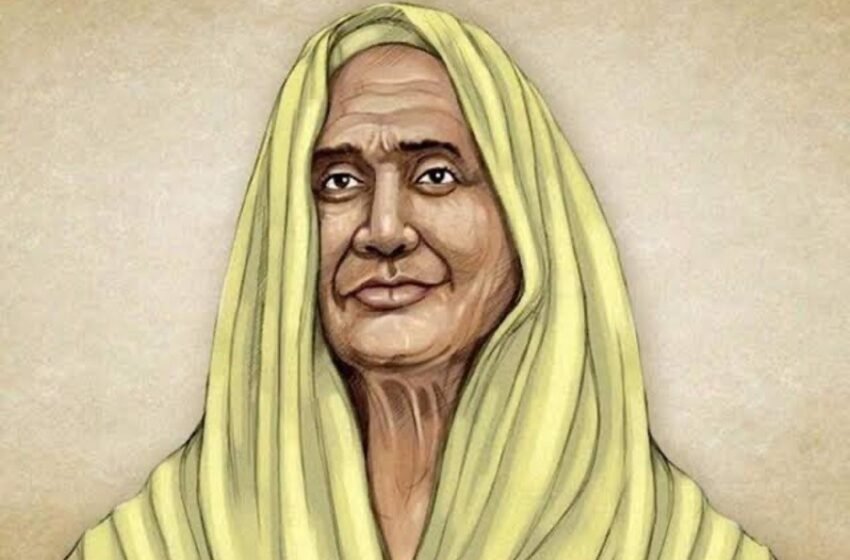Matangini Hazra: The Fearless Freedom Fighter Who Defied Colonial Rule

India became independent in 1947 after a huge struggle to eradicate British empowerment. In that struggle, Indians formed many freedom movements and conferences. We know the important leaders who fought for independence like Mahatma Gandhi, Jawaharlal Nehru, Subhash Chandra Bose and many more. In any talks or articles does anyone say or talk about the importance of Female Freedom Fighters? India not only got freedom from the British but female liberty and equality also got independent by the efforts of many female freedom fighters. They fought for their country as well as their equality. It is important to talk about the female freedom fighters to see their contributions towards the nation. In this blog, we are about to see one strong early freedom fighter: Matangini Hazra.

Personal life of Matangini Hazra:
Matangini Hazra was born on October 19, 1869, in the small village, of Hogla in the Tamluk town in Bengal (present-day West Bengal). She belongs to a poor peasant family and was not formally educated. She got married at the age of 12; her elderly husband was Trilochan Hazra. At the age of 18, she became widowed. She was a keen disciple of Mahatma Gandhi and his beliefs. Matangini followed his teachings profoundly so that she was called as “Gandhi Bhuri” which means “old lady Gandhi” in Bengali.

Matangini’s Participation in Indian Freedom:
In Swadeshi Movement was at peak in Midnapore (Bengal), many women also participated in that movement and it was the first turning point for the participation of women in the national struggle. She was deeply influenced by the principles of Mahatma Gandhi. Under the influence of Indian freedom movements, on January 26th, 1932 people generate a parade over the country to look over the condition of their own country under the British Government. When this parade gathers so many people from the streets of Midnapore to join, this was the first movement that influence Matangini to fight for her country.
In 1932 she took part in the Civil Disobedience movement in Midnapore. She also played an important role in the Dandi March, which was led by Mahatma Gandhi. She was arrested by the British Police for her participation in the Salt Satyagraha Movement. After her release, she participated in the Chowkidari Tax Bandha march in 1933 holding the Tricolour flag. She was ferociously chanting slogans against the British in that march, and for that, she was beaten up by the police and was severely injured; later arrested again. She was imprisoned for six months at Baharampur. After her second release from prison, she actively joined the Indian National Congress to follow her ideal, Mahatma Gandhi.

In 1942, she became the part of Quit India Movement, the National Congress committee members decided to take over all the Police Stations and Government Offices which were run and administered by the British. Soon this became an act and in Midnapore district, to establish an independent Indian State, Matangini Hazra, age 72, led a parade with 6000 people along her side (mostly women Volunteers) march-pasted to take over Tamluk Police Station. When this parade group reached the town, the Crown Police ordered them to disperse the crowd under Section 144 of the Indian Penal Code. But the group head, Matangini Hazra moved forward. The minute she stepped forward, she was shot once by the police. With the Tricolour flag in her hand, she doesn’t hesitate and appeals to the police, “to not to fire the crowd”. She also kept chanting: “Vande Mataram”, but she was repeatedly shot thrice; later she collapsed there and died. She died with the Indian National Flag in her hand at the age of 72.
Social Work:
Apart from her freedom struggles, Matangini, after her six month imprisonment she started to help the Untouchables. She also helped people with small pox that has widely spread over the region of Midnapore.

Present-day legacies:
India became Independent in 1947, later many schools, streets and roads in Kolkata were named after Matangini Hazra. The first women’s statue that was established in Kolkata after independent India was for Matangini Hazra in 1977. The statue was established in Tamluk town, where she was killed. In 2002, postal stamps were brought out in the series of sixty years of the Quit India Movement. In 2015, Shahid Matangini Hazra Government College for Women was established in Tamluk, Midnapore.


